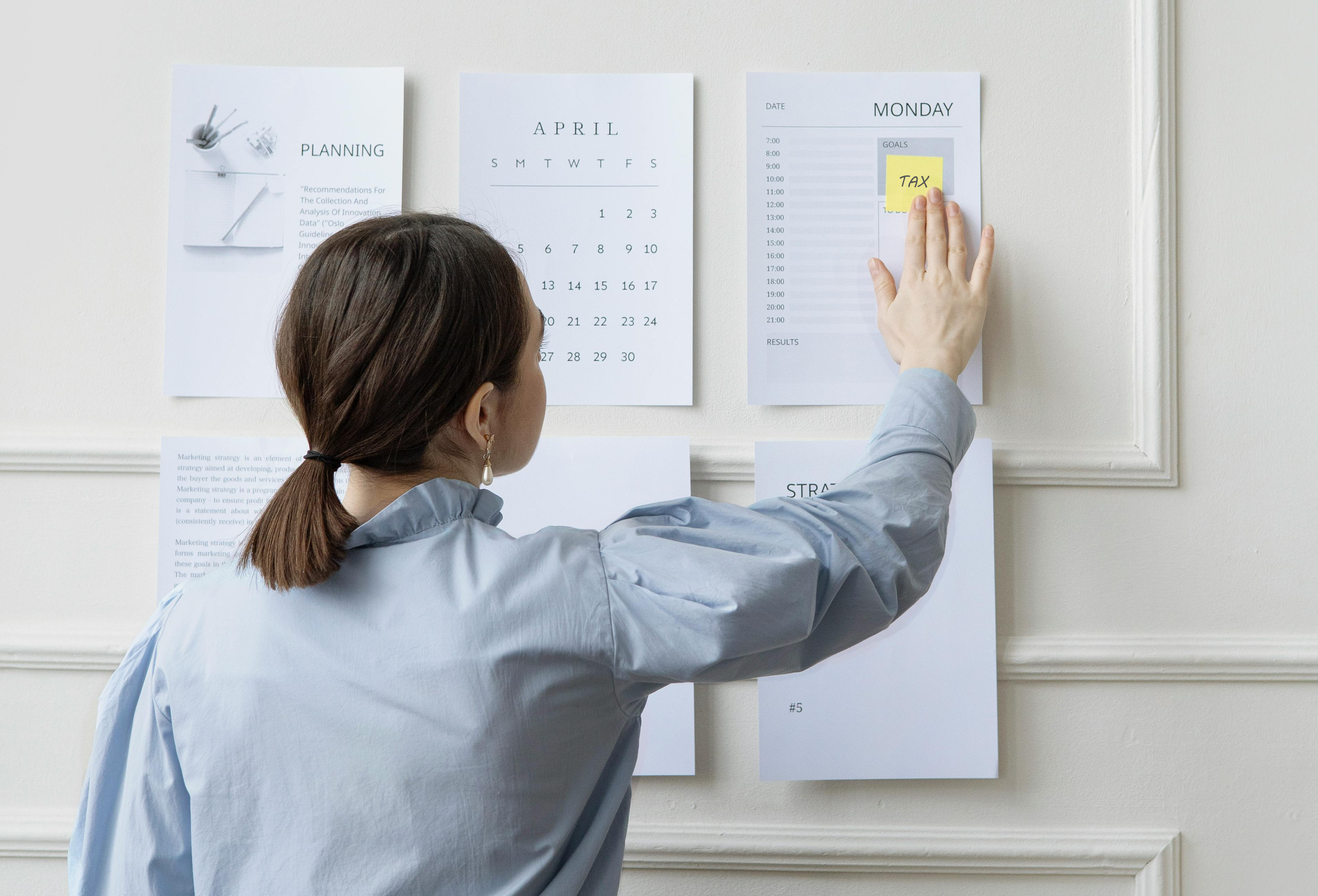How to avoid the usual 31 January Self Assessment deadline panic
Jan 10th 2025
By GoSimpleTax

OK, so yet again you’ve left sorting out your Self Assessment tax return until far too late, despite promising yourself that you wouldn’t ever let it happen again. Tut, tut. The online filing deadline, which is midnight on 31 January, is now fast approaching and you’re beginning to panic.
First things first: stop panicking. No good ever comes from panicking. Instead, take control of the situation. There are steps that you can take today that will enable you to get your Self Assessment tax return done and dusted quickly and with minimum fuss, so you can get on with other things.
Step 1: Gather the tax return information you need
Obviously, you should already be registered for Self Assessment. If not, visit government website GOV.UK to find out how to register for Self Assessment).
If you don’t have everything to hand that you need to complete your Self Assessment tax return, having to go and find it will disrupt the process. Getting it all together before you start will speed things up considerably. You will need:
● your ten-digit UTR (Unique Taxpayer Reference) number, which enables HMRC to identify you as a taxpayer. It will be printed in previous tax returns and tax letters that HMRC has sent you
● your National Insurance number (you’ll find it in your Personal Tax Account, previous payslips, P60s, personal tax letters, etc)
● summary totals of all UK taxable income that you received within the tax year, which could come from self-employment, employment, rental income, share dividends, pensions, savings interest, state benefits, capital gains from sale of taxable assets, tips and commission, etc
● summary totals of tax expenses for which you wish to claim tax relief
● details of pension schemes payments you’ve made during the tax year.
Step 2: Know which supplementary pages you must also complete
As well as the SA100 (the main Self Assessment tax return), you’ll probably need to complete supplementary pages to provide details of specific types of taxable income. Sole traders must complete the SA103 self-employment supplementary pages, while those who have earned taxable UK rental income must complete SA105. Non-UK income or gains must be reported via an SA106 and you need to use an SA108 to report taxable capital gains after selling an asset. Visit government website GOV.UK for a full list of Self Assessment tax return supplementary pages.
Step 3: Use Self Assessment tax return-filing software
You can complete and file your Self Assessment tax return online. You sign in using your Government Gateway user ID and password. HMRC publishes online guidance notes on filling in your tax return, but having to stop to read up every time you need to fill in part of your tax return makes the process slow and laborious. Plus, if you don’t understand something, there’s nothing to prevent you from making mistakes that later cost you time and money.
For speed and added peace of mind, many people use commercial tax return-filing software, because it prevents simple mistakes and saves a lot of time and hassle when you’re completing Self Assessment tax returns. If you use accounting software, key numbers can be quickly pulled through into the right places within the tax return-filing software, with the necessary supplementary pages also added once you specify your sources of taxable income. The software holds your hand through the process, with automatic prompts helping to prevent basic mistakes.
An annual subscription for decent tax return-filing software can cost less than £60 a year, which is much less than paying an accountant to fill in and file your tax return (and you’ll still have to gather together all of the information the accountant needs).
Step 4: Pick the right day, time and place
Set aside a morning or afternoon to complete your Self Assessment tax return. Make it a day when you’re less busy with other things. Also pick a place that’s quiet and free from distractions, where you can focus on the job in hand. If possible, avoid doing it at night when you’re feeling more tired, because you’ll take longer and there’s a greater chance that you’ll make a mistake. If you do it earlier in the day, you should be more awake and alert. If family members are going to be nearby, they should know not to disturb you because you need to be able to concentrate on completing your tax return.
Step 5: Complete your tax return in one session
Commit to getting your tax return done in one sitting, because that should mean you get it done in less time. Ignore your emails, messages and calls. Make yourself a nice cuppa, relax and begin to methodically work your way through your tax return and supplementary pages. About three hours should be more than enough to get the job done if you’ve first gathered together all of the information you need. You may do it quicker, especially if you use Self Assessment tax return filing software – but don’t rush. Get it right the first time. Keep on going, don’t stop and don’t allow yourself to become distracted. When completed, leave yourself enough time to quickly check through your tax return at the end, just to make sure you haven’t left anything out.
In future, try to avoid leaving it so late. You can file your Self Assessment tax return any time after the UK tax year ends on 5 April. If you’re not already doing so, using accounting software to record your income and expenses really makes it much easier to get the summary figures you need for your tax return. For now, good luck with getting this year’s Self Assessment tax return off your plate.
About
GoSimpleTax
Self Assessment Tax Return Made Simple.
You don’t need to be an expert to complete your Self Assessment tax return, get started with GoSimpleTax today, it’s free to try.
Our software submits directly to HMRC and is the digital solution for the Self-Employed, Freelancers, Sole Traders and anyone with income outside of PAYE. The software will provide you with hints and tips that could save you money on allowances and expenses you may have missed.
Get started with GoSimpleTax today, it’s free to try.
Search our Blog






